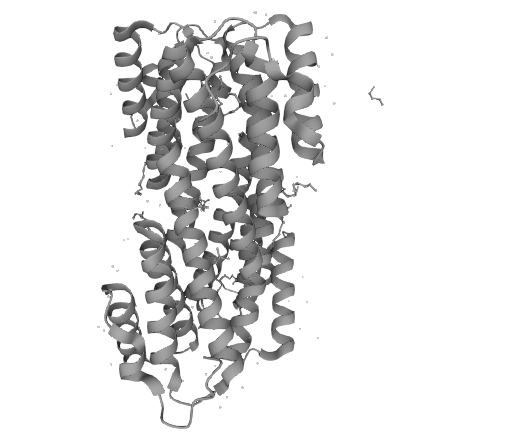Service Line:+86-022-82164980
Address:FL-4, Building A5, International Enterprise Community, Tianjin, China
Email:[email protected]
SAA, known as serum amyloid A (SAA), is the precursor substance for amyloid A (AA), which is produced primarily by hepatocytes under the regulation of inflammatory cytokines, and circulates at low levels in the blood.SAA plays a role in the immune system, and under inflammatory conditions, levels of SAA proteins in blood and other tissues are elevated and signal antimicrobial cells to migrate to sites of infection.SAA also functions as an apolipoprotein for the HDL complex. SAA plays a role in the immune system, and under inflammatory conditions, levels of SAA protein in the blood and other tissues are elevated and signal antimicrobial cells to migrate to the site of infection.SAA also acts as an apo-protein for the HDL complex. Elevated levels of SAA ultimately affect secondary amyloidosis, the extracellular aggregation of amyloid fibers formed from circulating precursors, which can occur in a variety of tissues and organs. The most common amyloidosis is secondary to chronic inflammatory diseases.
KMD Bioscience, as a supplier of raw materials for in vitro diagnostics, has been providing the IVD industry with high-quality diagnostic antigens and antibody raw materials for flow, colloidal gold, chemiluminescence, immunoturbidimetric and other assay platforms for several consecutive years. With four platforms, including monoclonal antibody production platform, polyclonal antibody production platform, phage antibody library technology platform, and antibody sequencing and application platform, KMD Bioscience has been committed to the rapid development and large-scale production of proteins and antibodies for in vitro diagnostics. KMD Bioscience's antibody diagnostic raw materials and antigen diagnostic raw materials are strictly monitored during the R&D and production stages, and the performance indexes (specificity, activity, stability, etc.) of antibodies/antigens are analyzed to ensure that IVD raw materials are characterized by small batch-to-batch/intra-batch variations, wide linear ranges, good stability, high sensitivity, and so on. KMD Bioscience can create tailor-made one-stop solutions according to the needs and application scenarios of corporate customers, fully supporting the development of in vitro diagnostic reagent products.
Molecular structure and characteristics of SAA
Serum amyloid A (SAA) is a member of the SAA family and has the characteristics of the SAA family. There are 4 SAA genes on human chromosome 11, and according to their expression in vivo, SAA can be categorized into 2 types, acute SAA (A-SAA) and constitutive SAA (C-SAA).SAA contains binding sites for lipids and calcium ions, and its secondary structure consists of α-helix and β-folding. It is a globular protein molecule. the number of amino acids in the polypeptide chains of A-SAA and C-SAA are 104 and 112, respectively. this is due to the fact that C-SAA has an extra octapeptide sequence and this octapeptide sequence can form a glycosylation site, yielding two relative masses of C-SAA, 14 kDa and 19 kDa.

Figure 1 Molecular structure of SAA
Biological functions of SAA
Serum amyloid A (SSA) rises rapidly by about 1000-fold in 4-6 h during the acute phase of inflammation or infection and decreases markedly during the recovery phase when the antigen is cleared.The sensitivity and specificity of SAA are higher than that of C-reactive protein (CRP). Specifically, after the body is stimulated, the expression of A-SAA is elevated by cytokines (IL-1, IL-6, TNFα) and becomes the main form of SAA. And the production of A-SAA was co-regulated by IL-1, IL-6 and TNFα, and cytokines alone had little effect on the expression of A-SAA. When SAA produced in the liver enters the circulation, it rapidly binds to HDL3 in the body and is degraded only after HDL dissociates from ASSA. Inflammation as well as infection slows down the degradation of A-SAA in vivo, and the combination of both increased synthesis and slowed degradation causes a sustained elevation of A-SAA in the circulation.
KMD Bioscience has many years of experience in the research of monoclonal antibody drugs. KMD Bioscience has gathered a group of scientists with advanced technology in the field of monoclonal antibodies, and is committed to providing good service for our customers' drug research. Our monoclonal antibody drugs are developed using recombinant antibody technology, using the same sequence as therapeutic antibodies and tested to ensure specific binding to the same target molecules, making them a suitable choice for drug research or analytical development. All antibody products we offer are subject to stringent QC validation and all antibodies are rigorously tested to ensure high purity and quality. Meanwhile, KMD Bioscience' s research experts are always looking for newer targets and are committed to providing customers with a wide range of antibody products.
KMD Bioscience independently develops a variety of monoclonal antibody drugs for different targets. KMD Bioscience's monoclonal antibody drugs are only used for scientific research and cannot be used for other purposes.